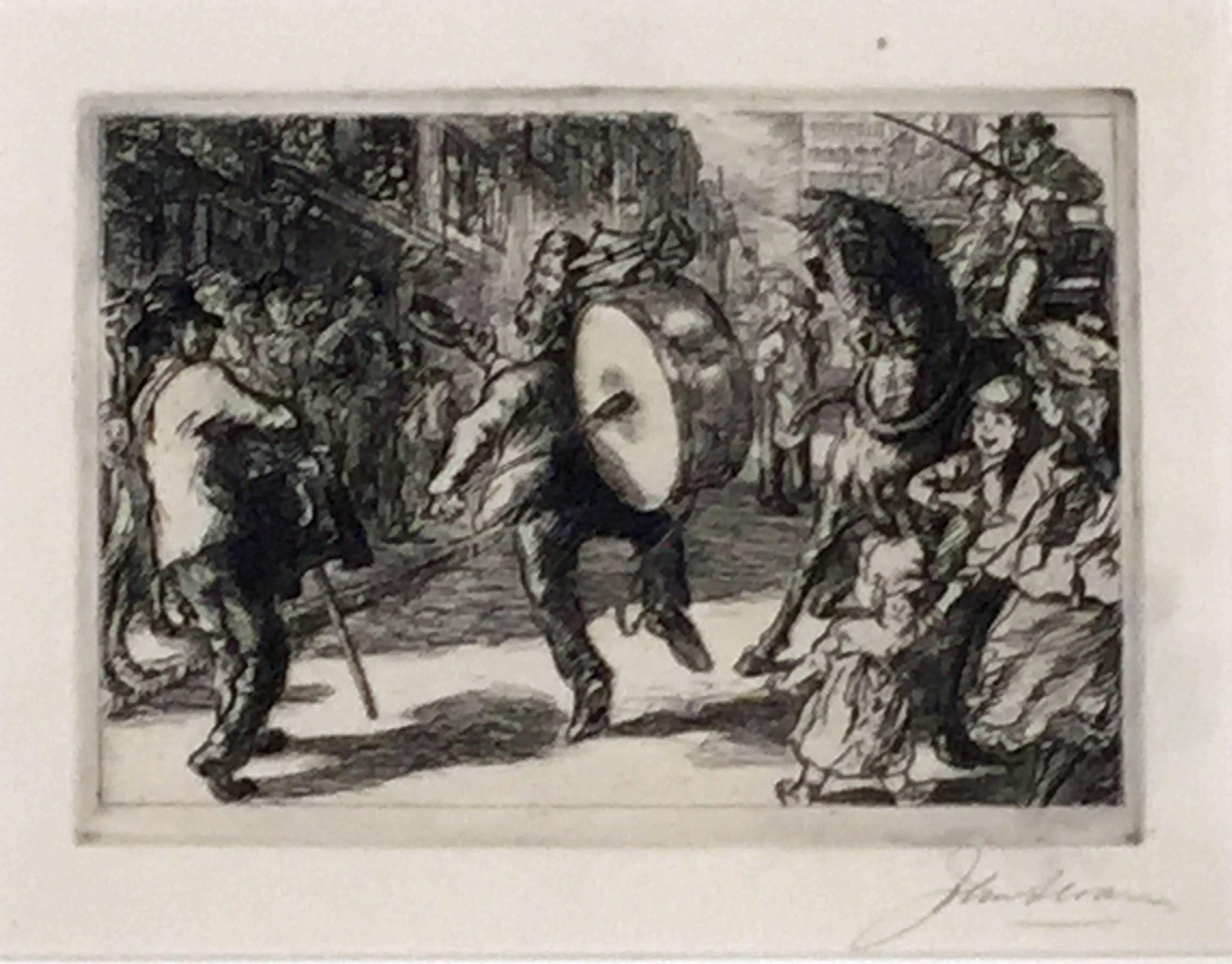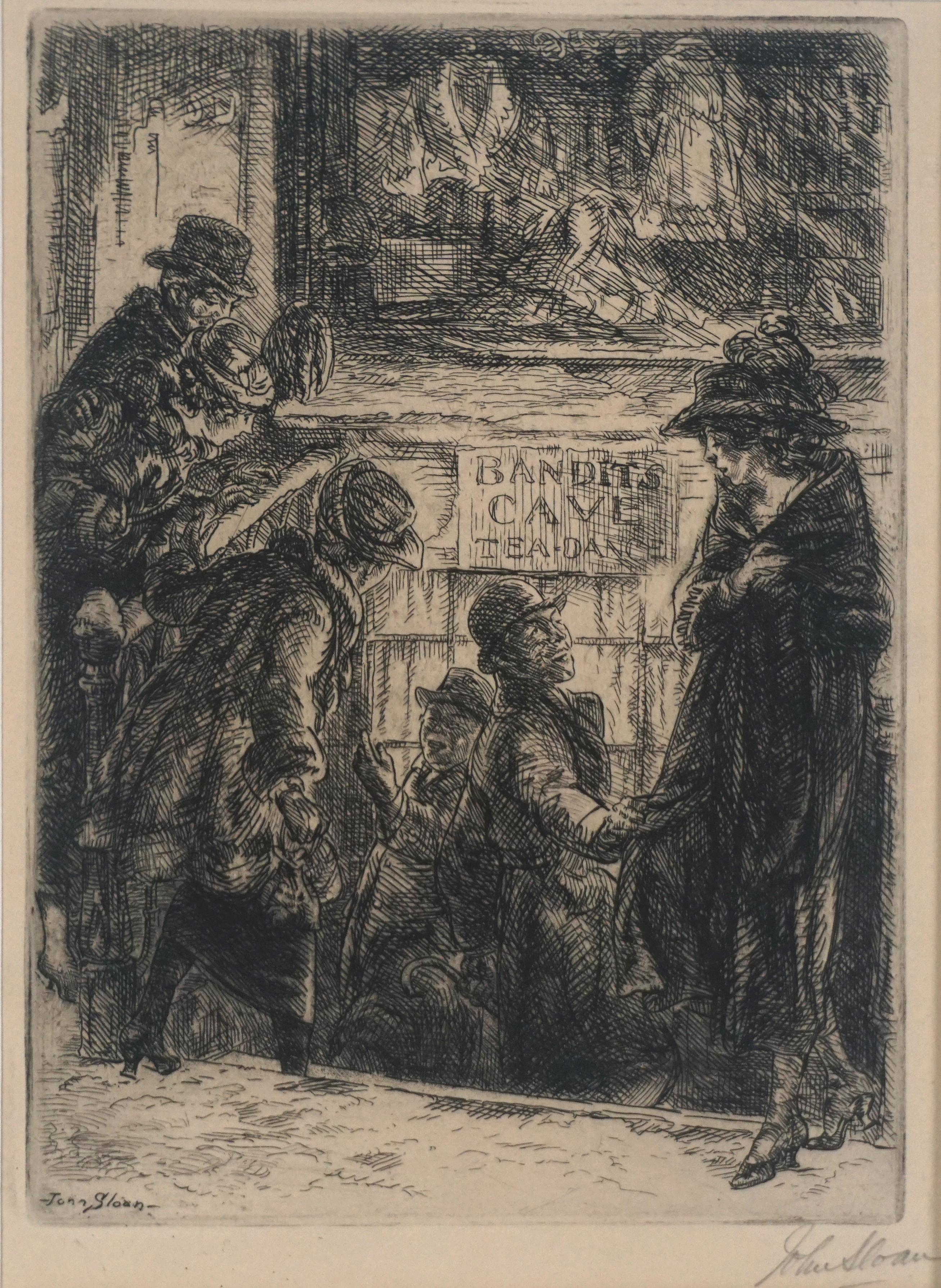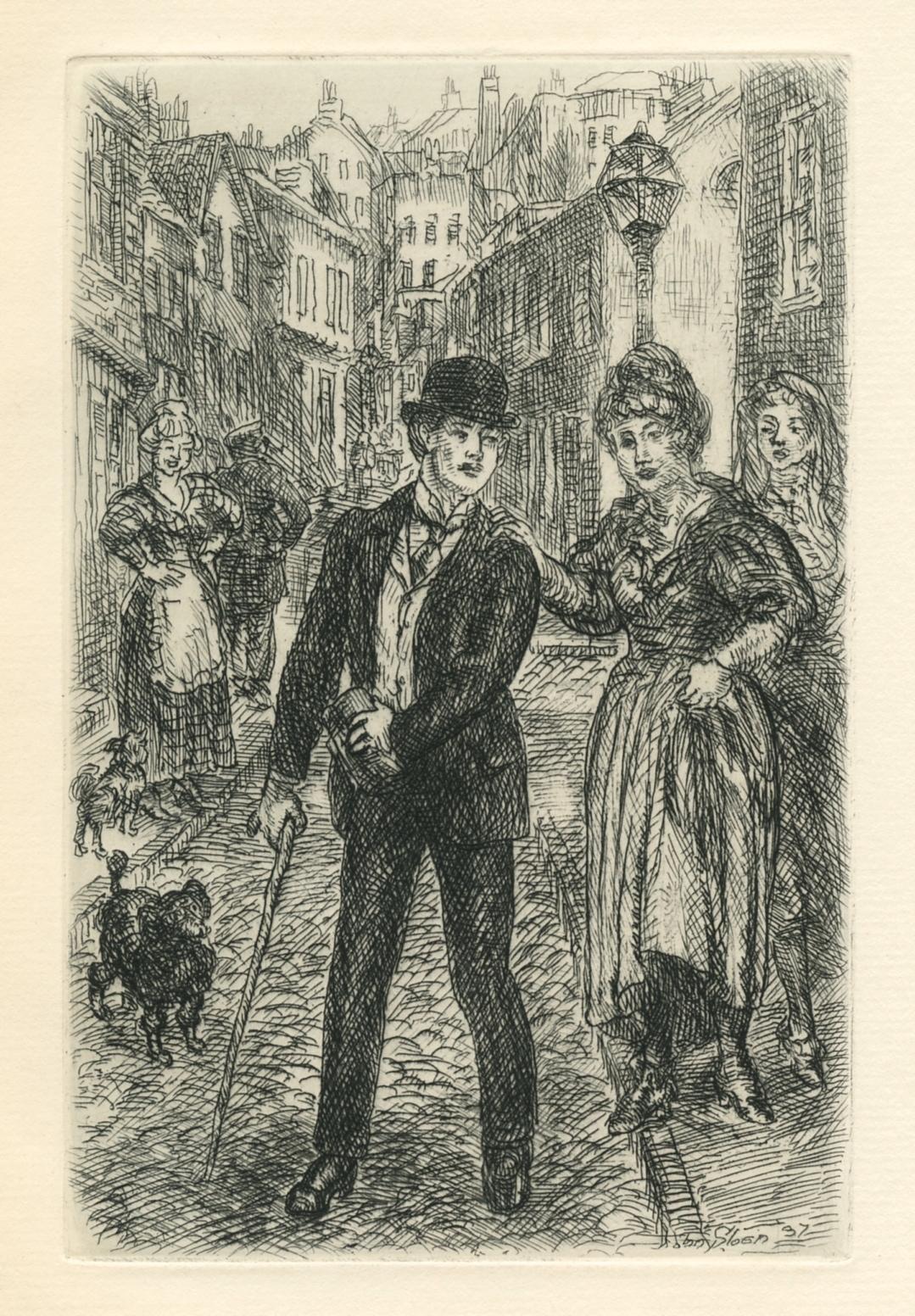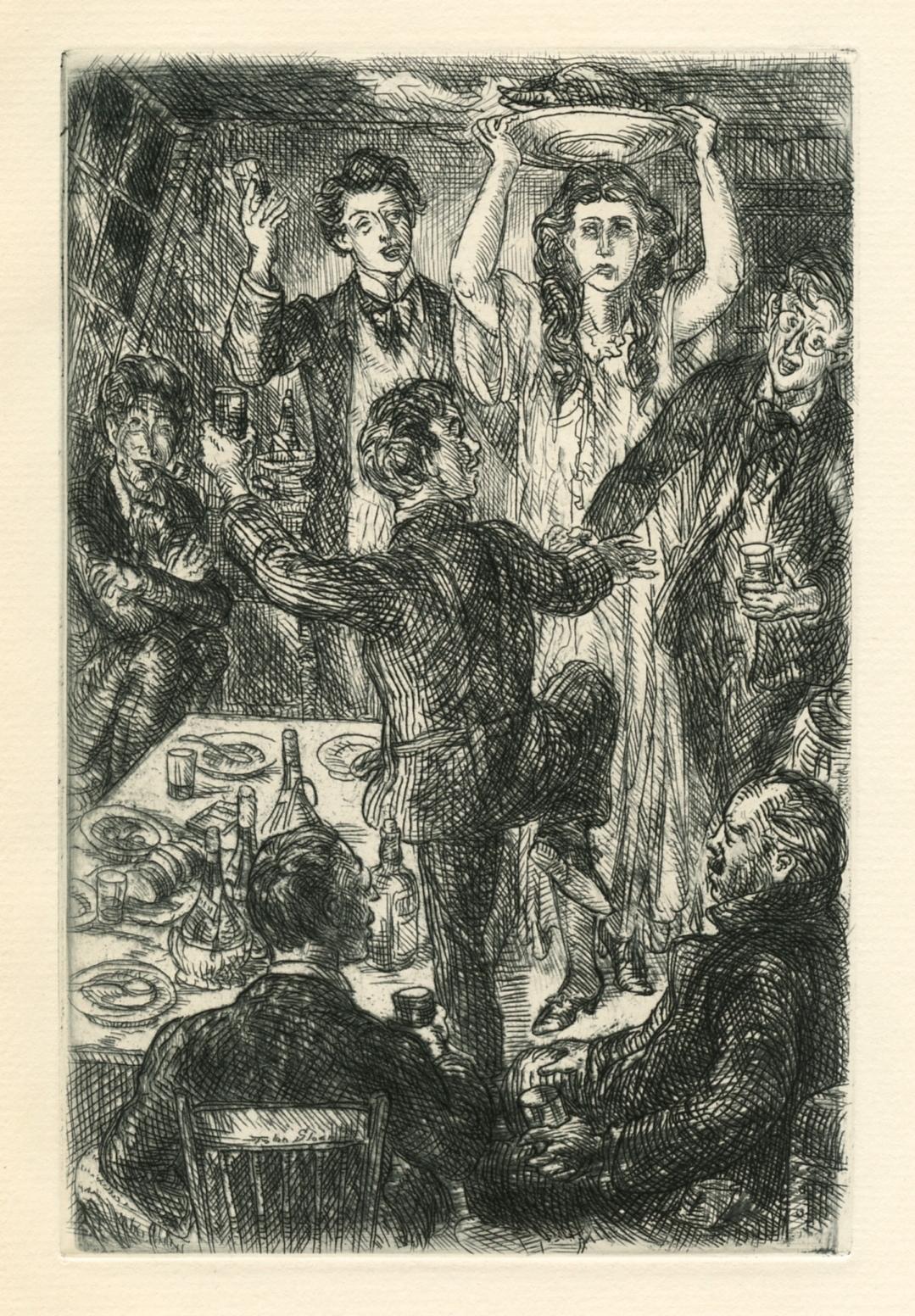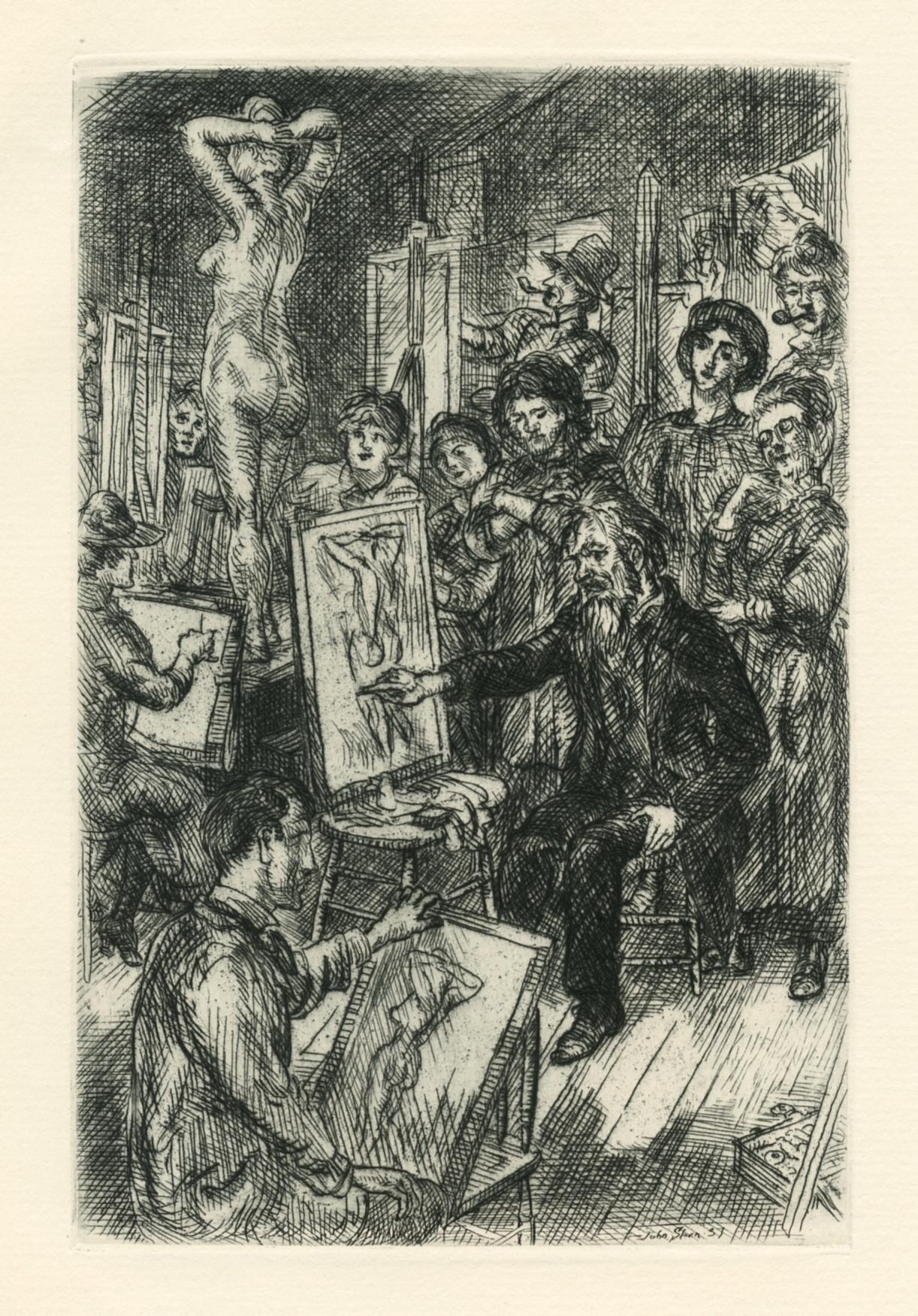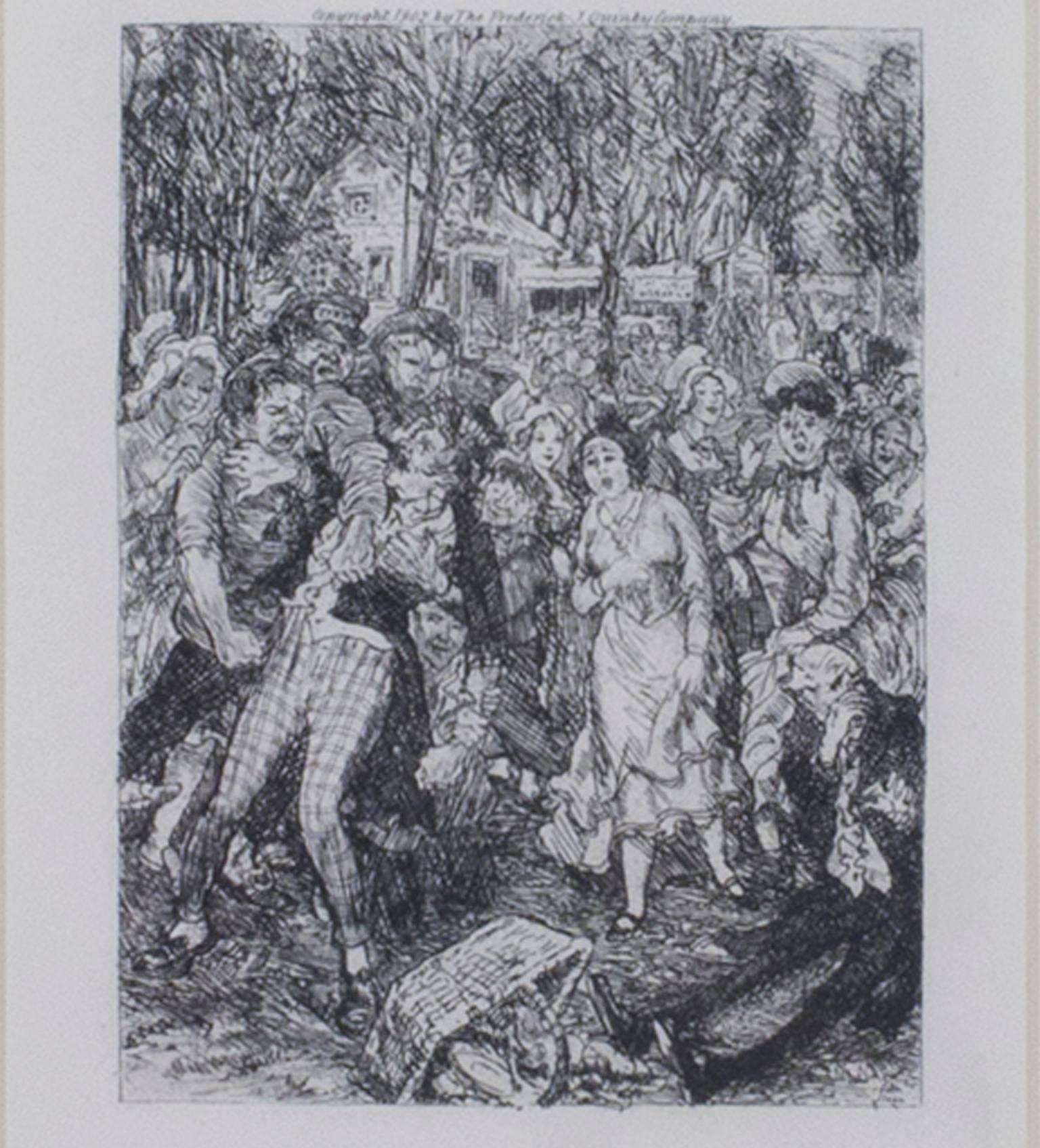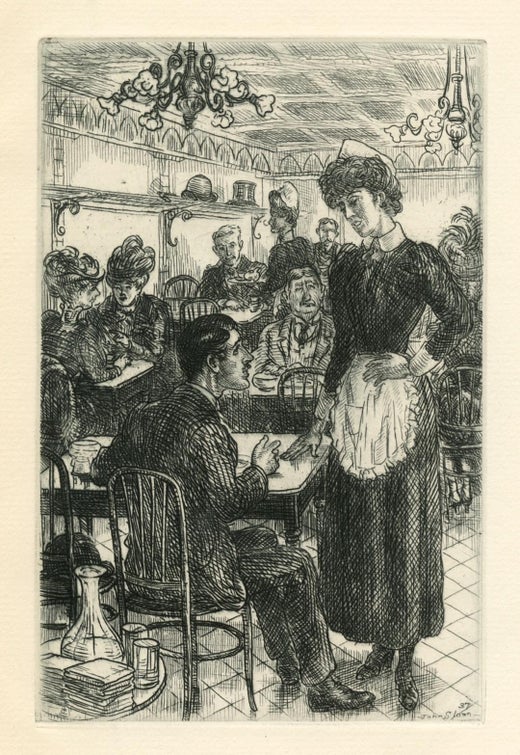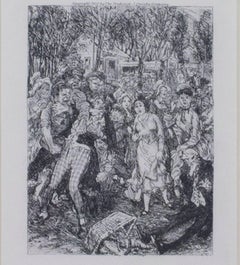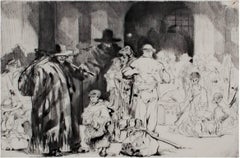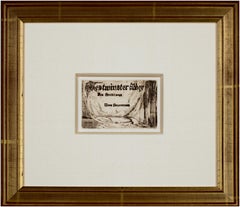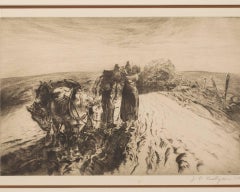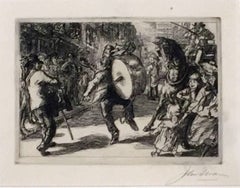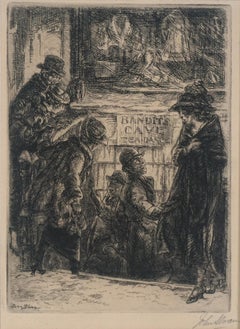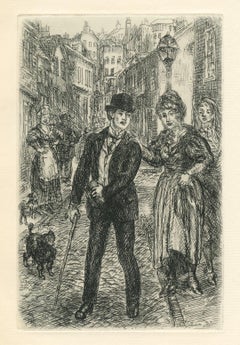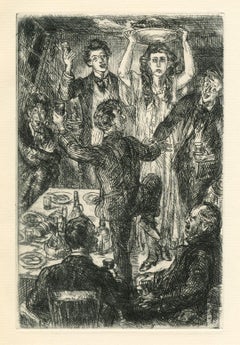Items Similar to "Man Monkey, " Original Etching Genre Scene signed by John Sloan
Want more images or videos?
Request additional images or videos from the seller
1 of 9
John Sloan"Man Monkey, " Original Etching Genre Scene signed by John Sloan1905
1905
$6,000
£4,630.70
€5,271.77
CA$8,567.48
A$9,344.51
CHF 4,923.76
MX$112,065.62
NOK 61,996.43
SEK 57,841.41
DKK 39,370.85
About the Item
"Man Monkey" is an original etching by John Sloan. The artist signed the piece in the lower right. This is from an edition of 100. It depicts a man banging a drum in the middle of a crowd.
4 5/8" x 6 1/2" art
15 1/4" x 17 1/4" frame
John French Sloan (August 2, 1871 – September 7, 1951) was a twentieth-century painter and etcher and one of the founders of the Ashcan school of American art. He was also a member of the group known as The Eight. He is best known for his urban genre scenes and ability to capture the essence of neighborhood life in New York City, often observed through his Chelsea studio window. Sloan has been called "the premier artist of the Ashcan School who painted the inexhaustible energy and life of New York City during the first decades of the twentieth century" and an "early twentieth-century realist painter who embraced the principles of Socialism and placed his artistic talents at the service of those beliefs.
- Creator:John Sloan (1832-1932, American)
- Creation Year:1905
- Dimensions:Height: 15.25 in (38.74 cm)Width: 17.25 in (43.82 cm)
- Medium:
- Movement & Style:
- Period:
- Condition:
- Gallery Location:Milwaukee, WI
- Reference Number:Seller: 8071g1stDibs: LU60532690101
John Sloan
John Sloancame to New York in 1904 and worked for some time as a freelance illustrator. With Robert Henri, he organized an exhibition of a group of urban realist painters, known as "The Eight" or the "Ashcan School," who challenged traditional notions of art. Having moved to the Village in 1912, Sloan lived with his wife Dolly at 240 West 4th Street and at 88 Washington Place.
About the Seller
4.9
Gold Seller
Premium sellers maintaining a 4.3+ rating and 24-hour response times
Established in 1966
1stDibs seller since 2017
452 sales on 1stDibs
Typical response time: 1 hour
- ShippingRetrieving quote...Shipping from: Milwaukee, WI
- Return Policy
More From This Seller
View All"The Row at the Picnic, " Original Black and White Etching by John Sloan
By John Sloan
Located in Milwaukee, WI
"The Row at the Picnic" is an original etching by John Sloan. This piece depicts a fight that broke out in a park. There is a mass of people huddled together.
4 7/8" x 3 1/2" art
17...
Category
Early 1900s Ashcan School Figurative Prints
Materials
Etching
20th century engraving figurative print interior dramatic black and white signed
By Auguste Brouet
Located in Milwaukee, WI
"Les Emigrants" is an original roller engraving by Auguste Brouet. The artist signed the piece lower right and wrote the edition number (30/50) lower left. This engraving depicts a f...
Category
Early 1900s Modern Figurative Prints
Materials
Engraving
"Westminster Abbey, " complete portfolio of 13 etchings by John Sloan
By John Sloan
Located in Milwaukee, WI
John Sloan's Westminster Abbey portfolio is among the most rare of his printmaking output, and a complete set like this is even more unusual. Etched in dark brown ink in on a sturdy ...
Category
1890s Ashcan School Interior Prints
Materials
Etching, Paper
"When Day is Done, " an Original Etching signed by John Edward Costigan
By John Edward Costigan
Located in Milwaukee, WI
"When Day is Done" is an original etching and aquatint signed lower right in pencil by the artist John Edward Costigan. It depicts a man and a woman with their young child at the end...
Category
1930s Post-Impressionist Figurative Prints
Materials
Etching, Aquatint
19th century woodcut print figurative Victorian American urban city scene
By Winslow Homer
Located in Milwaukee, WI
"Skating at Boston" is an original woodcut print by Winslow Homer. It depicts a large number of figures figure skating with Boston in the background.
9...
Category
1850s Realist Figurative Prints
Materials
Woodcut
18th century etching figurative neoclassical mythology scene dynamic
By Alexander Runciman
Located in Milwaukee, WI
"Cormar Attacking a Spirit on the Waters" is an etching by eighteenth-century Scottish artist Alexander Runciman, signed in plate on the lower edge of the etching, "ARunciman inv. & ...
Category
1770s Academic Figurative Prints
Materials
Etching, Paper, Ink
You May Also Like
MAN MONKEY.
By John Sloan
Located in Portland, ME
Sloan, John. MAN MONKEY. M.130. Etching, 1905. Edition of 100, Signed by Sloan. Dated in the lower margin "June 13 - 1905," and further inscribed "J. S. imp. dated by Sloan - final s...
Category
Early 1900s American Realist Figurative Prints
Materials
Etching
Early 20th Century Social Realism Etching by John Sloan -- Bandits Cave
By John French Sloan
Located in Soquel, CA
1920 Social Realism Etching by John French Sloan titled "Bandits Cave"
Compelling etching by John Sloan (American 1871 - 1951), 1920 during first year of prohibition showing a estab...
Category
1920s Ashcan School Figurative Prints
Materials
Laid Paper, Etching
original etching
By John Sloan
Located in Henderson, NV
Medium: original etching. Executed by John Sloan to illustrate the Somerset Maugham classic "Of Human Bondage" and published in 1938 in a limited edition of 1500 by the Yale Universi...
Category
1930s Prints and Multiples
Materials
Etching
original etching
By John Sloan
Located in Henderson, NV
Medium: original etching. Executed by John Sloan to illustrate the Somerset Maugham classic "Of Human Bondage" and published in 1938 in a limited edition of 1500 by the Yale Universi...
Category
1930s Prints and Multiples
Materials
Etching
original etching
By John Sloan
Located in Henderson, NV
Medium: original etching. Executed by John Sloan to illustrate the Somerset Maugham classic "Of Human Bondage" and published in 1938 in a limited edition of 1500 by the Yale Universi...
Category
1930s Prints and Multiples
Materials
Etching
original etching
By John Sloan
Located in Henderson, NV
Medium: original etching. Executed by John Sloan to illustrate the Somerset Maugham classic "Of Human Bondage" and published in 1938 in a limited edition of 1500 by the Yale Universi...
Category
1930s Prints and Multiples
Materials
Etching
More Ways To Browse
Antique Monkey Art
Antique Monkey Prints
Antique Print Monkey
Retro Spoleto Posters
Richard Lindner Collage
Robert Longo Cindy
Roy Lichtenstein Thinking Of Him
Ruth Waddy
Sadao Watanabe. On Sale
Salvador Dali Argillet
Salvador Dali Artist Proof
Salvador Dali Canto 7
Salvador Dali Don Quixote Etching
Salvador Dali Exhibition Poster
Salvador Dali Icarus
Salvador Dali Judgement
Salvador Dali Libra
Salvador Dali Litho
